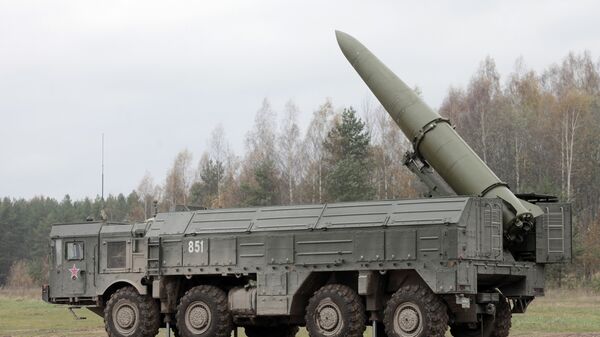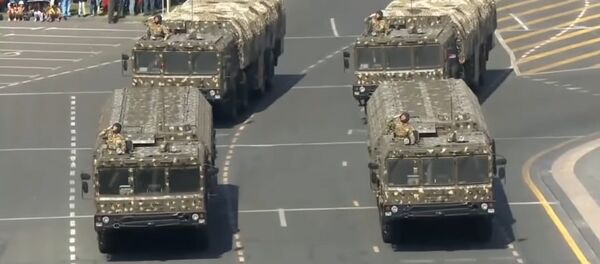"Russia's defense industry enterprises are at present working on the modernization of the [Iskander-M] complex in order to increase its combat and operational characteristics," Matveevsky said.
The Iskander-M (NATO reporting name SS-26 Stone) is designed to destroy a wide variety of ground targets at a range of up to 310 miles. It entered into service in 2006 with a 10-year assigned life.
Matveevsky stressed that the system's large modernization potential "will maintain it at the current state not inferior to foreign models until 2030."
The Russian Land Force's missile and artillery troops will be fully reequiped with Iskander-M mobile missile systems by 2020, Maj. Gen. Mikhail Matveevsky, said Friday.
Matveevsky said all of Russia's Central, Southern and Eastern Military District formations have been revamped to accommodate the Iskander-Ms.
"By 2020, we will completely finish upgrading all existing formations to the Iskander-M missile complex," he stressed, referring to the Western Military District.
The 9K720 Iskander-M (SS-26 Stone) is a Russian mobile short-range ballistic missile system, which entered service in 2006 to replace the OTR-23 Oka missile system.
Iskander missiles are nuclear-capable and can engage a wide range of targets, from enemy military hardware to underground command centers.
The Iskander is characterized by high mobility and maneuverability, as it takes just 20 minutes to place the system in operational readiness.



